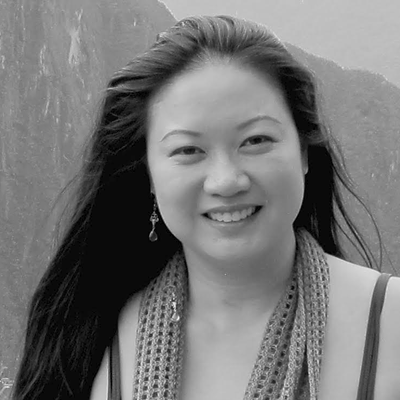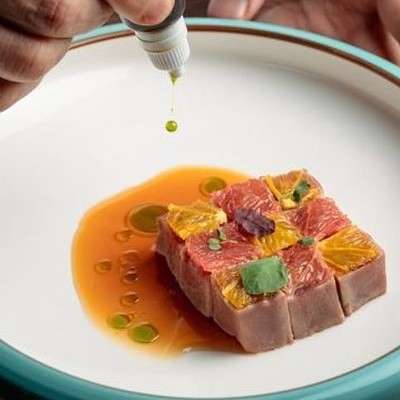The year was 2014. Three Korean restaurants opened in Houston. Two of them — Nara and Dosi — debuted inside the Loop to a lot of press, potential and promise, offering modern takes on traditional Korean fare.
One of them, Lucky Palace Korean Restaurant, opened without making even a blip on our city’s collective food consciousness, offering traditional Korean food. What’s more, it opened not in the Koreatown area in Spring Branch—where it could be expected to flourish—but on Bellaire Boulevard in the heart of a sprawling Chinatown.
Of the three, which seemed most likely to thrive? Was it Nara — the upscale, obviously expensive modern Korean helmed by beloved local chef Donald Chang in the glitzy digs at West Ave in Upper Kirby? Or was it Dosi — which offered stylish Korean small plates and a soju bar on Shepherd — where chef Jordan Asher was putting out dishes worthy of our Instagram generation?
Surely the family-funded, mom-and-pop Lucky Palace, located in an empty-looking strip mall easily overlooked by drive-by traffic, wouldn’t have been the likely bet at the time.
Yet here we are in 2016 and the one restaurant left standing is not the one that had the big bucks or the well-known chef or the strong PR. It’s not the one that tried to introduce Korean food to the mainstream or that we read about so glowingly in the local media. Against the odds, Lucky Palace Korean Restaurant emerged as the sole survivor among the three, a tribute to its ability to get the kind of word-of-mouth praise that would give it a reputation as one of the best choices for Korean barbecue in Houston.
It’s not that Lucky Palace has the best Korean food around. On my first visit, a miscommunication with our server — who told us that when we ordered Korean barbecue, it would be cooked for us at the table — had a girlfriend and me ordering a slew of what we understood to be Korean barbecue dishes — kalbi (barbecue marinated short ribs), bulgogi (barbecue marinated beef) and dak bulgogi (barbecue spicy chicken) à la carte from the entrée section of the menu — only to receive them pre-cooked on a hot cast-iron plate. When we asked the server why the food wasn’t barbecued at our table the way it was at everyone else’s, he said we needed to order the Korean barbecue combo for that to happen.
Resigned to our fate, we found a few dishes that we enjoyed that day, among them a bamboo steamer plate of mandu (dumplings) that had a fresh, handmade quality about them that we loved. A plate of japchae stir-fried sweet potato noodles was well-prepared and properly seasoned, easily something we’d order again. A kimchi fried rice was also sufficiently pleasing, the rice a mix of al dente kernels blended together with those that had burned to a golden crisp in the pan — all of it jumbled together, gloriously red-orange in color and full of the tangy fermented funk of kimchi flavor.
The meat dishes — typically the highlight in a Korean barbecue meal — were nothing to write home about, however. The kalbi, cut into bite-size pieces and satisfyingly tasty, were served on a bed of onions that should have been cooked until translucent and caramelized in the meat juices. Instead, they were undercooked and basically raw. We left them on the plate untouched.
Our plate of dak bulgogi was a matte, mustard-brown color. It suffered from that dry, overcooked, left-out-on-the-counter-to-oxidize-too-long quality that had us leaving it basically uneaten. The bulgogi, similarly, looked fairly unappetizing, a sort of drab, grayish-brown mound of meat (also on a bed of undercooked onions). It was, thankfully, tender and tasted a lot better than it looked, but was still less than impressive.
A fairly mediocre meal all around, it left me puzzled, wondering how it was that this place — this one-room, hole-in-the-wall, nondescript place sandwiched between a 99-cent store and a hair salon in a strip mall notable more for its empty parking spaces than for its tenants — had survived Nara, where unforgettable dishes such as the mind-blowing Korean barbecue Texas wagyu tomahawk rib eye could be had.
It made me question how Houston could fail to see the brilliance in dishes like the bo ssam pork lettuce wrap dish at Dosi, made with a heritage breed pork shank whose skin had been roasted crisp so that each bite sort of pinged your brain’s pleasure receptors and had you reaching for more.
The answer came on my second visit, when I brought a dinner companion of Korean descent who helped me dine, order and see Lucky Palace from a Korean perspective.
This time, instead of ordering from the à la carte meat options found under “entrée” on the menu (a confusing aspect of the menu, to be sure), my friend, Joe, turned to the last page and ordered Combo A from the section labeled “Korean B.B.Q. Combo” (note that the menu is written in English and Korean, and something in the translation may have been lost during my first visit).
Combo A for two people came with prime Angus beef brisket, pork belly, marinated Kobe-style beef (bulgogi), and LA-marinated beef short rib (kalbi). Additionally, the order came with steamed egg, Korean vegetable pancake, soybean paste stew and barbecue salad in addition to the banchan — all for $43.99.
Unlike previously, when the meats arrived already cooked, a server pushed a two-tiered cart to our table laid out with a tantalizing spread of everything in our combo. He then proceeded to place every single dish on our table at once, covering the entire surface area save for the rounded gas grill in the middle, which was uncovered and turned on so that we could grill the meats ourselves.
Within minutes, the mouthwatering aromas of sizzling chadolbaegi, thinly sliced brisket that curled up and cooked in seconds, were wafting in the air. We plucked the meat quickly from the grill with silver tongs, then wrapped the just-cooked slices in fresh green lettuce leaves that we dipped in a salt and sesame oil dip, supplementing with bites of whichever banchan we felt like eating.
Once we finished cooking the un-marinated brisket and pork belly, we added the marinated kalbi to the grill, finishing with the bulgogi. In contrast to the overcooked versions we’d had on the preceding visit, the quality of the meats in their raw form was impossible to mask. This was fresh stuff, a fact confirmed later by our server, who said the restaurant doesn’t use any frozen meat except for the brisket, which has to be frozen so that it can be sliced paper-thin.
Likewise, with the exception of the kimchi, which takes a few days to ferment, we found out the owner makes all the banchan daily — usually six to eight different types — with produce purchased each morning, rotating them according to what’s fresh and in season at the market.
Kimchis are often too sour or salty or spicy, but this one displayed a good balance between sweet and sour, and was spiced just enough to heat up your mouth but not enough that it would be unbearable. A cold sesame-seasoned enoki mushroom and green pepper banchan was really good, too, as was one made of soft curried potato. The steamed egg, which comes to the table bubbling in a hot stone pot, was also excellent, hot and supple, like a savory egg custard.
“The flavors are about as close as I can find to my mom’s cooking,” Joe said quite happily as we feasted in near silence, putting into words that one unique trait about Lucky Palace that sets it apart from the Naras and the Dosis and other restaurants like it.
At the end of the day, Lucky Palace may never have the high-end meats like A5 wagyu or tomahawk rib eye that Nara had. It will never have the prettily plated, locavore menu that Dosi put out.
What it does have is a mom-and-pop quality that endears it to people. It’s there in the rustic wooden furnishings so characteristic of Korean restaurants; in the fact that the owner, Jun Kil, and her daughter, Cassandra, are often in the front of the house serving food and manning the register; and in the little touches like the sweet, iced cinnamon ginger tea, made fresh daily and served at the end of the meal.
It’s a powerful thing called authenticity, which, in the realm of Korean food in Houston, Lucky Palace dishes up in spades.
Lucky Palace Korean Restaurant
8508 Bellaire, 832-409-6002, www.facebook.com/luckypalace528. Hours: 11 a.m. to 3 p.m. and 5 p.m. to 10 p.m. Mondays, Wednesdays and Thursdays; 11 a.m. to 10:30 p.m. Fridays and Saturdays; 11 a.m. to 10 p.m. Sundays; closed Tuesdays.
Steamed egg $3
Korean salad $3
Jjin mandu (dumplings) $4.99
Japchae (noodles) $13.99
Beef bulgogi $16.99
Budae jjgae $15.99
Galbi (short ribs) $18.99
Dak bulgogi (chicken barbecue) $29.99
Combo A $43.99
Support Us
Houston's independent source of
local news and culture
account
- Welcome,
Insider - Login
- My Account
- My Newsletters
- Contribute
- Contact Us
- Sign out
[
{
"name": "Related Stories / Support Us Combo",
"component": "11591218",
"insertPoint": "4",
"requiredCountToDisplay": "4"
},{
"name": "Air - Billboard - Inline Content",
"component": "11591214",
"insertPoint": "2/3",
"requiredCountToDisplay": "7"
},{
"name": "R1 - Beta - Mobile Only",
"component": "12287027",
"insertPoint": "8",
"requiredCountToDisplay": "8"
},{
"name": "Air - MediumRectangle - Inline Content - Mobile Display Size 2",
"component": "11591215",
"insertPoint": "12",
"requiredCountToDisplay": "12"
},{
"name": "Air - MediumRectangle - Inline Content - Mobile Display Size 2",
"component": "11591215",
"insertPoint": "4th",
"startingPoint": "16",
"requiredCountToDisplay": "12"
}
,{
"name": "RevContent - In Article",
"component": "12527128",
"insertPoint": "3/5",
"requiredCountToDisplay": "5"
}
]
KEEP THE HOUSTON PRESS FREE...
Since we started the Houston Press, it has been defined as the free, independent voice of Houston, and we'd like to keep it that way. With local media under siege, it's more important than ever for us to rally support behind funding our local journalism. You can help by participating in our "I Support" program, allowing us to keep offering readers access to our incisive coverage of local news, food and culture with no paywalls.
Mai Pham is a contributing freelance food writer and food critic for the Houston Press whose adventurous palate has taken her from Argentina to Thailand and everywhere in between -- Peru, Spain, Hong Kong and more -- in pursuit of the most memorable bite. Her work appears in numerous outlets at the local, state and national level, where she is also a luxury travel correspondent for Forbes Travel Guide.
Contact:
Mai Pham
Trending Food & Drink
- First Look: Maximo's Patio
- This Week in Houston Food Events: A Buzzy Pickleball Bar Makes its Debut
- Best Of Houston® 2023: Best Fried Chicken
-
Sponsored Content From: [%sponsoredBy%]
[%title%]

Don't Miss Out
SIGN UP for the latest
food & drink
news, free stuff and more!
Become a member to support the independent voice of Houston
and help keep the future of the Houston Press FREE
Use of this website constitutes acceptance of our
terms of use,
our cookies policy, and our
privacy policy
The Houston Press may earn a portion of sales from products & services purchased through links on our site from our
affiliate partners.
©2024
Houston Press, LP. All rights reserved.





